Companion Robots
Personalization for the use of social robots in therapeutic sessions.
General description of the project
The personalization of social robots for use in therapeutic sessions makes it possible to offer interactive and motivating experiences for people with intellectual disabilities. These robots can perform cognitive stimulation activities, learning games, and recreational tasks that promote emotional, social, and communicative development.
The robots were configured to integrate Augmentative and Alternative Communication (AAC) technologies, such as pictograms and simplified voice messages, to facilitate user interaction. The activities were designed based on the needs of professionals and users, promoting learning, social interaction, and the development of specific skills.
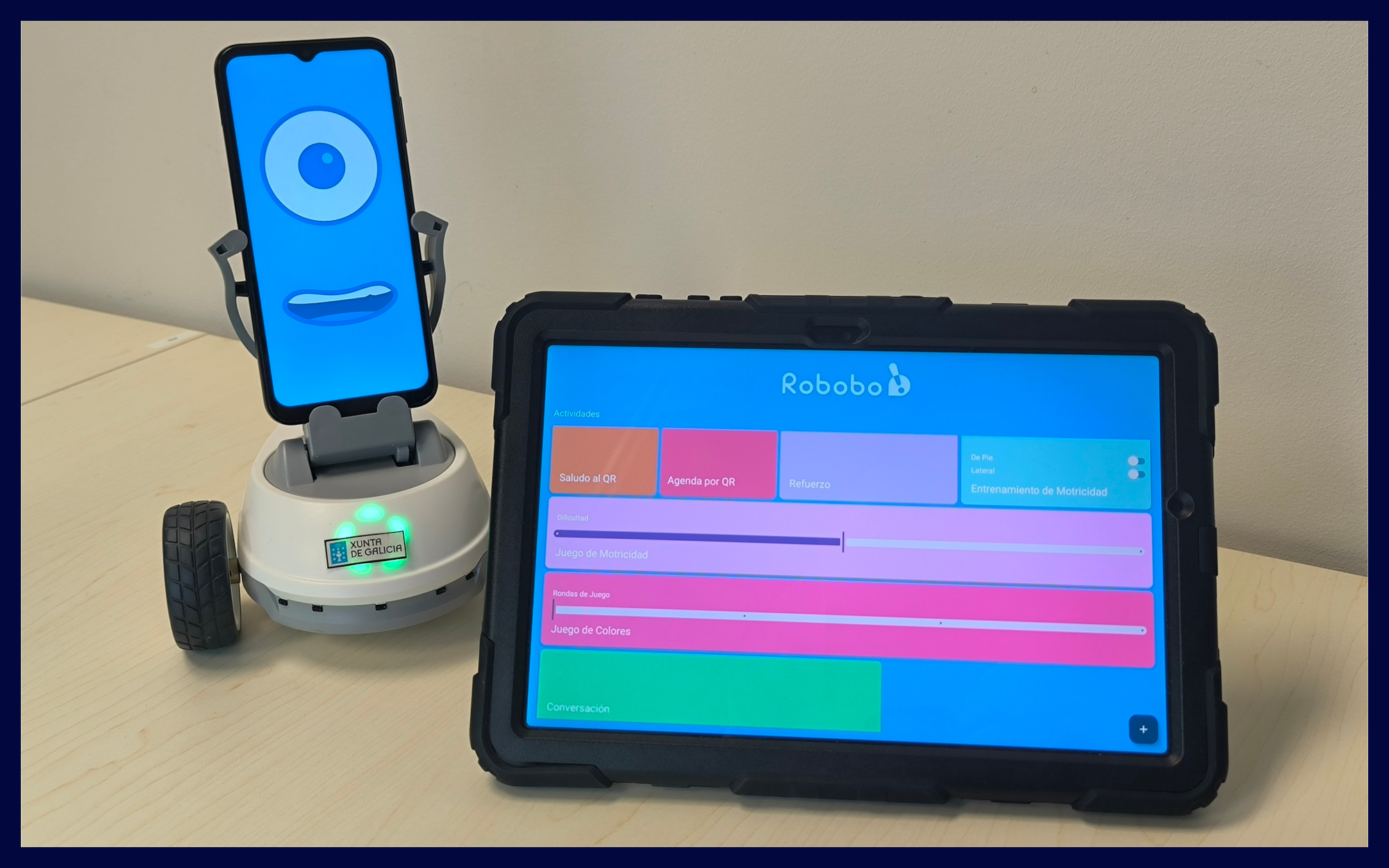
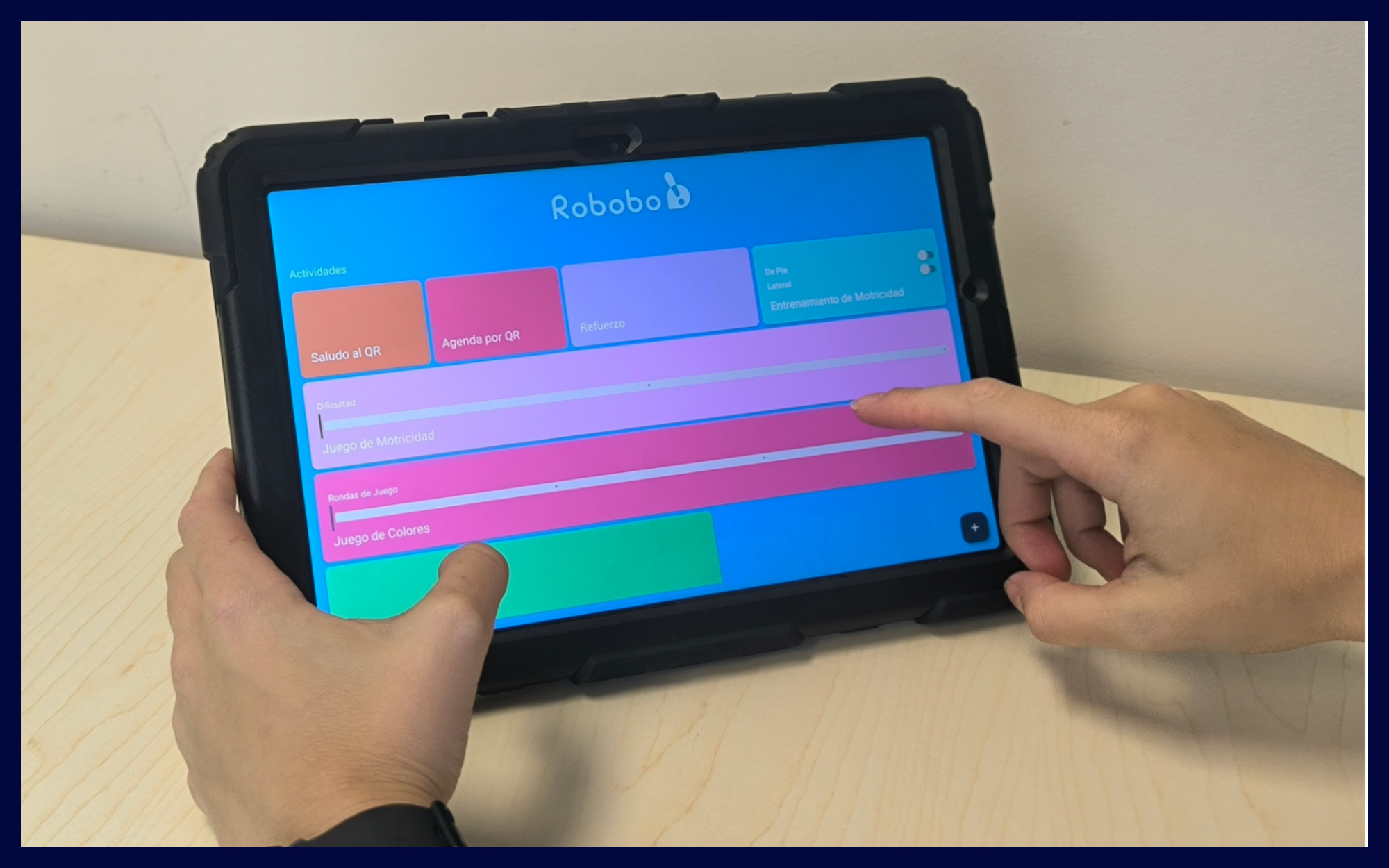
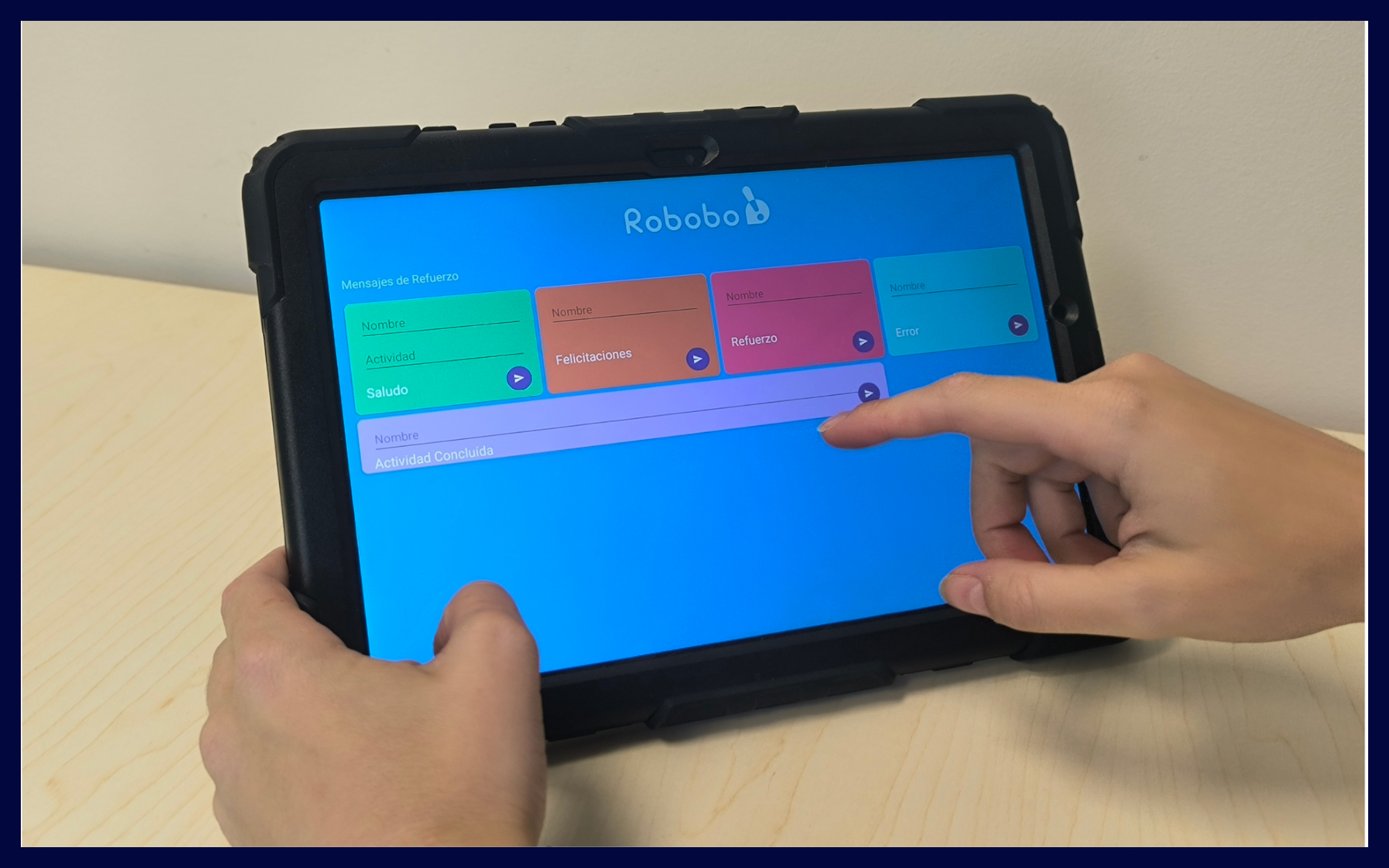
Technical breakdown of the project
The system architecture is based on the integration between the Robobo robot and a tablet with Android or iPadOS, using two applications: one installed on the smartphone that controls the robot, Robobo Cares, and another installed on the tablet, Robobo Cares – Remote, from which commands are sent to the robot.
The tablet acts as a control center, allowing the configuration, initiation, and management of the available activities. The connection between both devices is direct and automatic, without requiring manual setup before each session. Each activity has a start and stop button, allowing the robot to be put into standby mode at any time. Some activities also include customizable parameters to adapt the experience to each user’s characteristics and needs.
A key element of the system is QR code recognition. Each user has a code containing their identifier and full name. Robobo can read these codes and use the first name to carry out more personal and natural interactions. This mechanism also simplifies activity management and response customization and is accompanied by a guide or infographic explaining the process of creating and assigning codes to each participant.
The activities included within the Robobo platform are as follows:
- QR Greeting: Robobo identifies the user via their QR code and greets them by name, adding a motivational phrase randomly selected from a message bank to avoid repetition. The goal is to initiate interaction in a personalized and positive way.
- QR Agenda: The robot communicates relevant information for the user, such as medical appointments, center activities, or family visits. This function connects with external databases or APIs to provide automated and personalized messages.
- Activity Companion: Robobo serves as motivational support during center tasks and workshops. It can emit verbal and visual messages of greeting, praise, reinforcement, error, or activity completion. These messages combine voice, facial expressions, and synchronized movements, and professionals can use pre-made models or create new, situation-specific ones.
- Conversation: The robot integrates with a chatbot that enables simple dialogues with the user. It begins the conversation with a greeting and responds naturally to questions or comments, fostering communication and social skills while reinforcing the participant’s confidence.
- Colors: Robobo asks the user to show objects of different colors and reacts according to correctness, using positive messages, animated faces, and gentle movements. The activity works on attention and visual recognition.
- Motor Skills: This activity focuses on psychomotor practice and is divided into two modes:
- Warm-up: Robobo guides the user through basic movements (raising arms, turning the torso, bending) with visual and expressive support.
- Game: The robot proposes dynamic instructions of varying difficulty (“hands on your head,” “touch your nose,” etc.), improving coordination, balance, and laterality.
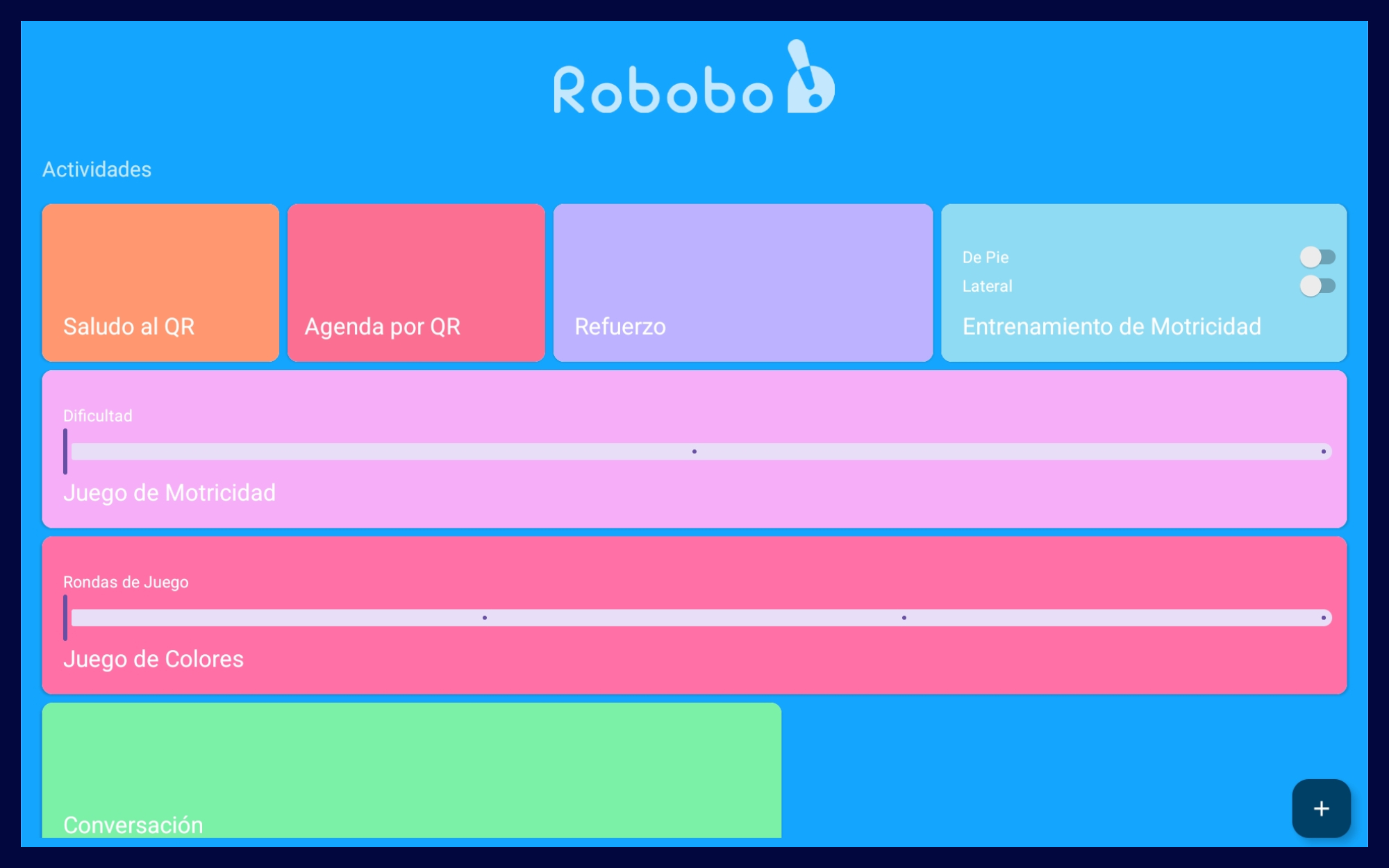

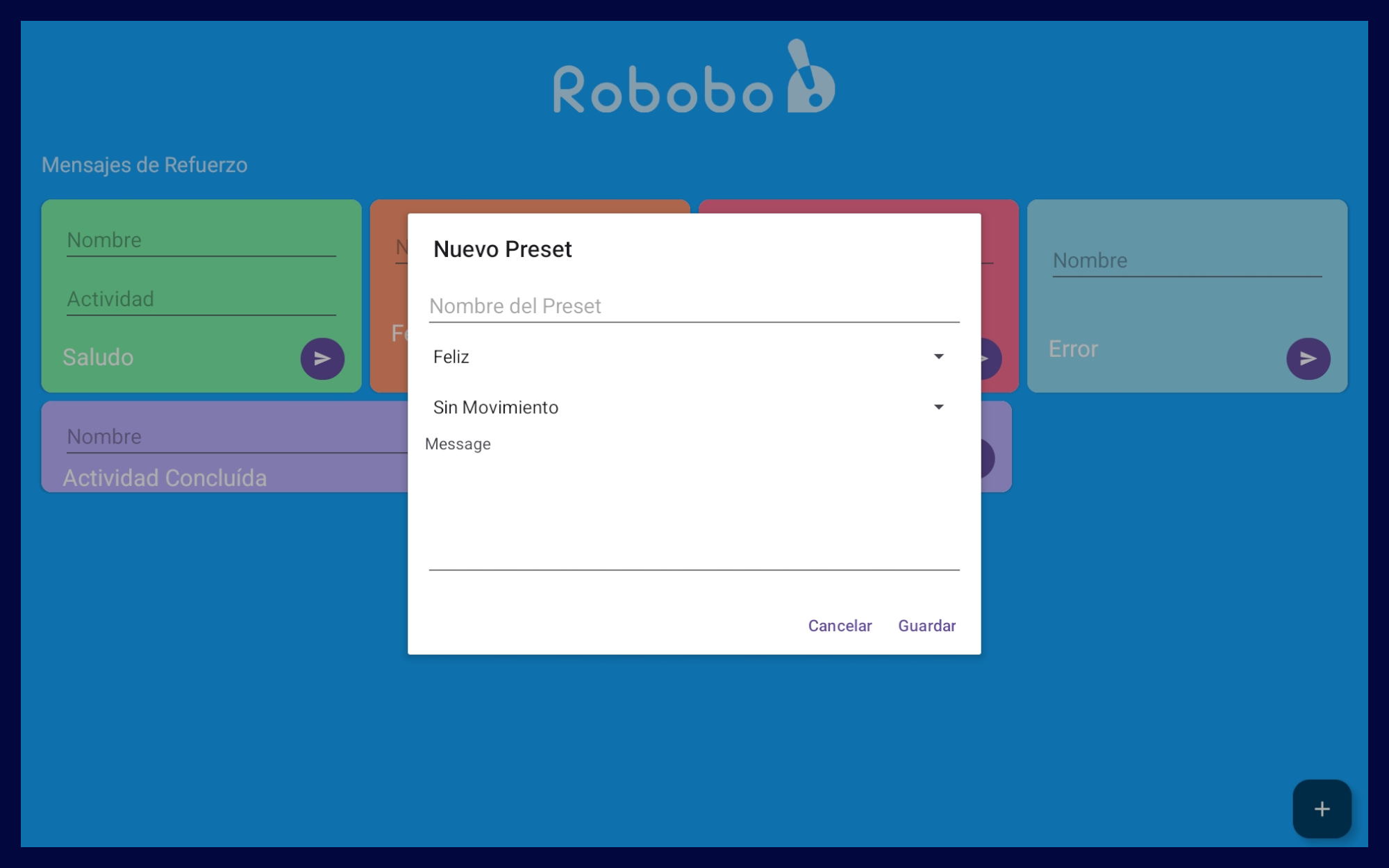
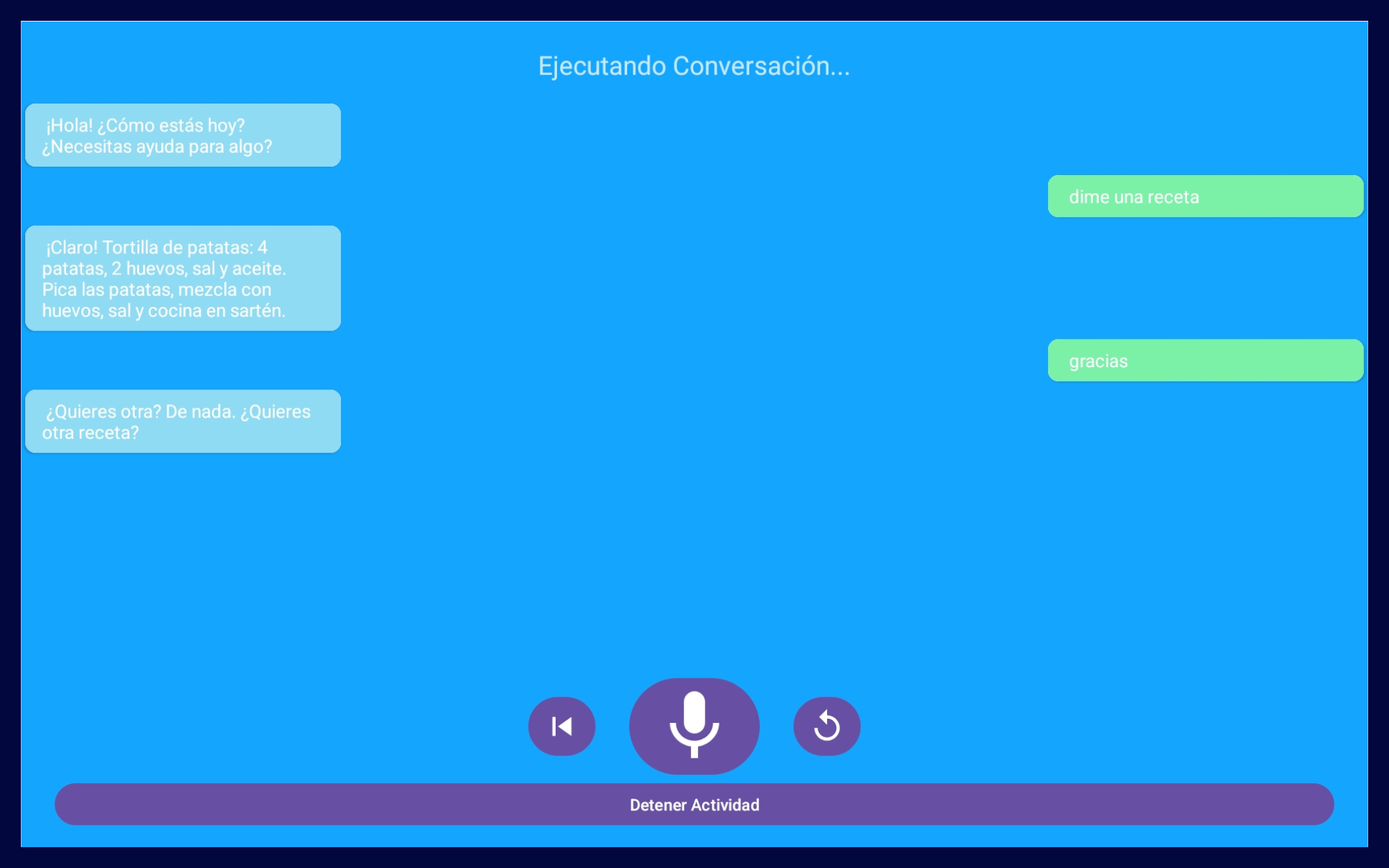
Robobo’s operation is based on a multimodal behavior combining synthesized voice, digital facial expressions, and physical movements. This integration allows the robot to respond coherently and expressively, creating a more human-like and engaging interaction. The system is designed to be accessible, with intuitive interfaces adapted for people with cognitive or motor disabilities. Communication with the tablet is direct and stable, though external connections for data exchange via API are also possible when needed.
From a technical standpoint, Robobo must ensure reliable QR code reading, efficient message management, and smooth real-time responses. The configuration interface should allow professionals to define parameters, modify content, and control sessions easily. Data protection compliance is essential, as the system manages sensitive personal information. Regarding physical safety, the robot includes emergency stop mechanisms and movement limits to prevent impacts or falls, particularly when working with people with reduced mobility.
In summary, Robobo represents an advanced technological tool designed to stimulate the physical, cognitive, and social development of people with disabilities. Its design combines technical robustness, accessibility, and customization capacity, enabling professionals to create sessions tailored to each user. The integration of hardware, software, and artificial intelligence allows Robobo to act not only as an automated assistant but as an interactive companion that promotes learning, autonomy, and daily motivation in care centers.
Team
- Dr. Francisco Javier Bellas Bouzas, Computer Engineering, GII Research Group
- Dr. Rodrigo Martín Prieto, computer engineer, MINT S.L.
- Paula de Santos Dorrego, occupational therapist, TALIONIS research group
- Raúl Fraiz Gómez, occupational therapist
- Manuel Lagos Rodríguez, computer engineer, TALIONIS research group
- Jorge Rivadulla Brey, computer engineer, TALIONIS research group
- Iago Fernández Garrido, computer engineer, TALIONIS research group


